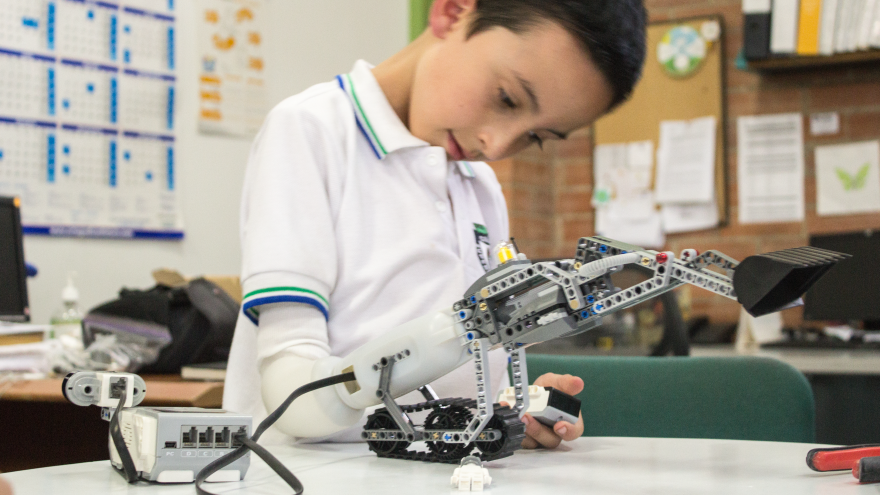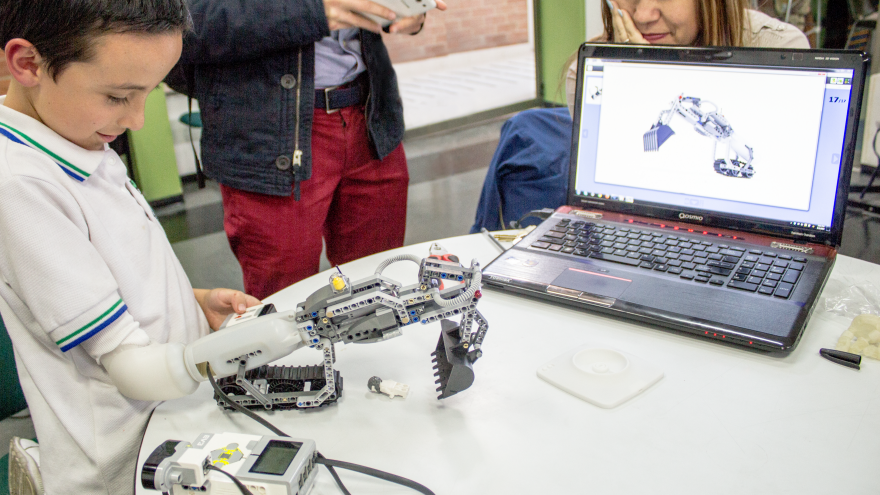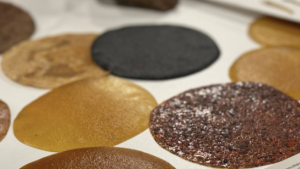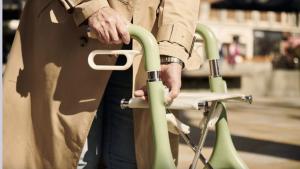The IKO prosthetics system allows disabled children to use their imaginations to create tools to suit their own needs. Columbian industrial designer Carlos Arturo Torres wanted to target the social and psychological needs of disabled children – not just the physical ones – by allowing them to custom-make their own prosthetics and have fun at the same time. His solution was to use LEGO.
Arturo recognised that while the physical trauma of amputation was large the psychological trauma was substantial too. He was struck by the social rejection disabled children suffer, with their social circle confined to their relatives and their interaction with peers limited.
The prosthetic system consists of a socket, battery and a “create area”. The socket is where the stump makes contact with the prosthesis. The battery area contains a rechargeable battery and a processor that translates signals from the socket through the battery to the create area. The socket provides signals to the create area from the myoelectric signals embedded in it. It is permanently attached to the battery. Myoelectric sensors use the existing muscles in the residual limb to control its functions with one or more sensors embedded into the prosthetic socket. Lastly, the create area, where the hand would be located, is where the LEGO module resides, which the child can build with friends or family.
The hand is designed to perform the actions of a grip or a hook and take advantage of the myoelectric sensors. It can interpret the “double tap” of a specific muscle to grab, point, rotate or move however the child wants.
Arturo believes that rehabilitating kids is not a matter of finding and fitting the best or the most technological prosthetics on the market, but rather about guiding the young patient to deal with his or her unexpected limitation.
He collaborated with CIREC and LEGO Future Lab. CIREC, a Columbian non-profit organisation, gives people disabled by the armed conflict in Columbia new possibilities. They brought their institutional knowledge of disability and psychology to the conceptualisation of IKO. LEGO future lab, a division from Lego systems that creates visions for the future of play, brought their knowledge of children’s creativity to the project.
Prosthetic limbs have been modular for a long time, but Arturo's design is particularly powerful in how holistically it approaches children and the psychological effect of amputation on them. This prosthetic allows children to build their own limb and engages others, children and adults alike in this process that essentially becomes a fun game.
"Using the LEGO system was part of this solution, not just because of its creative content, but most of it its social feature," says Arturo.
This is a toy that gathers people around with a single goal: the pride of creation, but in this scenario I found that it transcends to a higher level.
"When I was testing the prototype I planned two different sessions, one that was hard to achieve and forced the kid to use his family and people nearby to finish, and a second one easy enough to involve a normal kid and get a glimpse the social dynamics that the system could create."
Besides being a structural element, the LEGO bricks are colourful and a great way to find a dynamic game that is easy to learn. Arturo's invention is a flexible open-ended play experience.
In the final stage of the project, Arturo tested the prototype in Columbia along with some special LEGO sets design. The prosthetic hopes to be a balance between a playful experience and something functional, and moreover something that could allow children to explore their creativity as something to be proud of.










